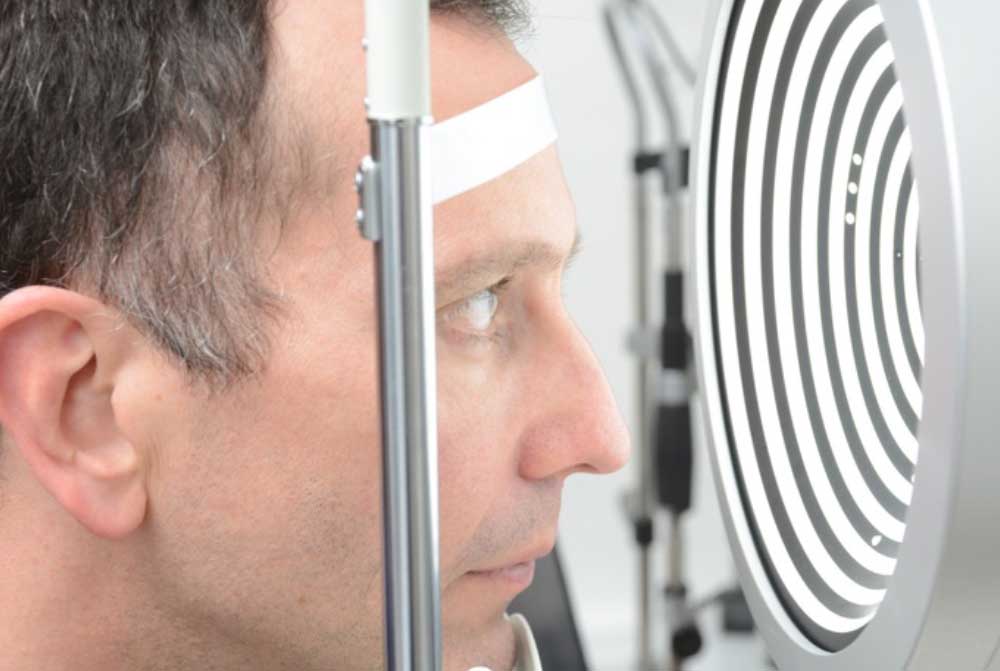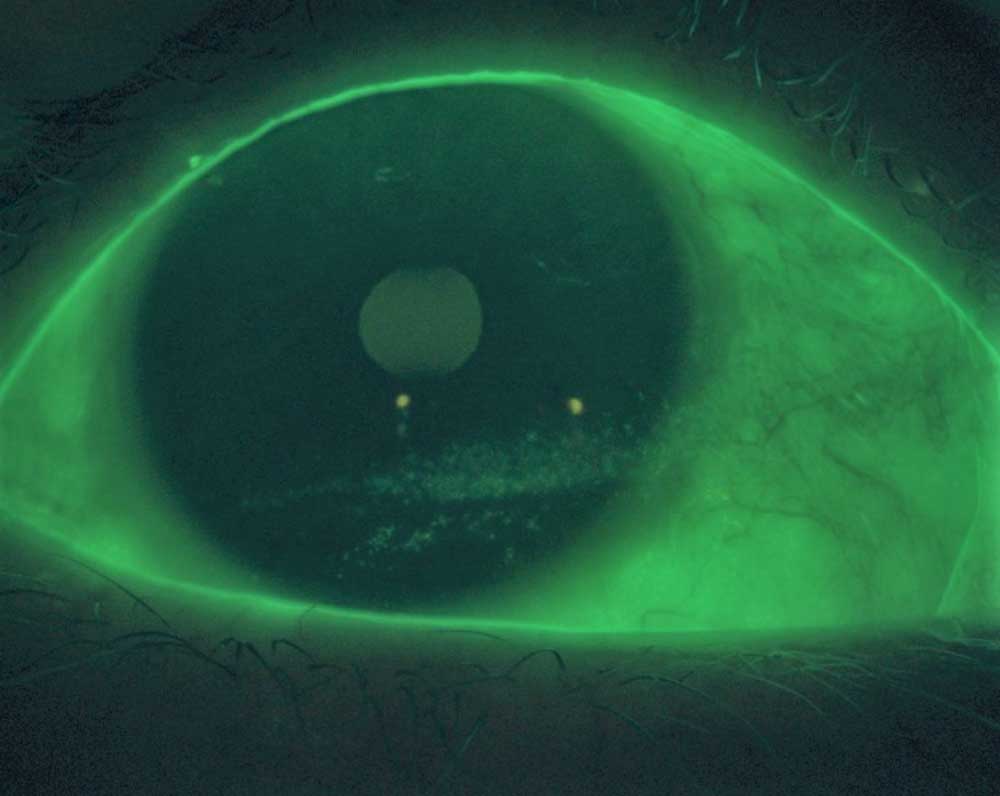
When you attend a dry eye clinic, the clinician will first thoroughly discuss your background, lifestyle and medical history to get a good idea of certain risk factors that may be contributing to your dry eye disease. Questionnaires may be used to score and track how bad your dry eye sensations are and how dry eyes is impacting your daily life. Once this is done, they will then assess how healthy the surface of your eyes is using a variety of instruments and tools. Note that different clinicians have different tools that may aim to do the same thing, and clinicians may not have access to all the tests described here.

- Health of your tears
Clinicians can also gauge how much tears are being produced by measuring the height of the tear lake (meniscus) that resides along your eyelid margin using a microscope. Other tests to assess your tear film health include measuring tear osmolarity (how salty your tears are) and the amount of inflammatory markers in your tears, although these require more specialised tools.
- Health of the oily layer of your tear film
Our tears contain a layer of oil that protects it from evaporating quickly and helps them to spread evenly to protect the ocular surface. One of the most common dry eye tests is to assess how fast your tears evaporate (known as the tear breakup time). This may be done by instilling a special yellow-orange dye on the surface of your eyes, or using special instruments that reflect patterns on your tears. The amount of oil on the tears can also be checked with special cameras.
The oil is produced by glands in both your upper and lower eyelids, which are expressed every time you blink. Clinicians will also check how well your oil glands are functioning by lightly pressing on them to check the quality of the oil being expressed. The oil expressed should be clear like olive oil consistency, rather than cloudy and thick like refrigerated butter or toothpaste. Infrared cameras could also be used to image the oil glands and check their shape and length (known as meibography).
- Health of your cells on the eye surface
The surface of our eyes are made up of skin-like cells tightly linked together. To test the structural integrity of these cells, clinicians use special dyes like the one mentioned above for tear breakup time. The yellow-orange dye (known as fluorescein) stains cells that may be aggravated from dryness or injury. Clinicians may also have access to a more specialised green dye (known as lissamine green), which stains cells more so over the surface of the white of your eyes. This green dye also shows more clearly if there is any major friction between the eyelids and the surface of your eyes every time you blink.
- Other tests or observations
Clinicians will note how the redness of your eyes, which is an indication of how inflamed the eyes are. They will also check how clean your eyelashes and eyelids are as poor lid hygiene can cause inflammation of the eyelids from build-up of bacteria and change the quality of your tears.


